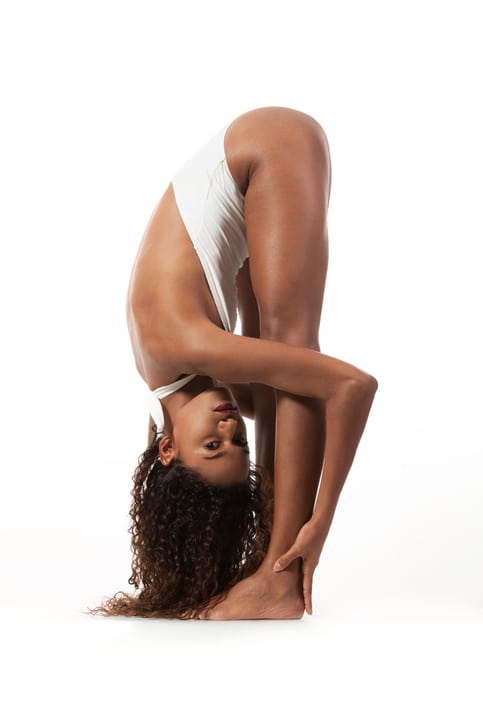Do you or your children suffer different joint aches or seem to be constantly injuring different joints? If so, you may have Joint Hypermobility. In this blog we describe this condition and give some useful tips to help you manage the symptoms and show how Physiotherapy can help.
20-30% of individuals worldwide have some level of hypermobility and it affects both children and adults. In the past this condition was largely overlooked and management was often ineffective or even aggravating. There is a real difference between being flexible, having Joint Hypermobility and having Joint Hypermobility Syndrome. There is a spectrum of flexibility seen within the population with some people seemingly stiff as a board and others super bendy and there is yet another group who have additional symptoms. Read on to learn more about the differences.
So what is joint hypermobility?
If you were to google it right now the differences in definitions can be quite alarming. This can also cause inaccurate self diagnosis.
In summary:
Joint Hypermobility
double jointed thumb
People with joint hypermobility are particularly supple and able to move their limbs into positions that other people find impossible. Joint hypermobility is what some people refer to as having “loose joints” or being “double-jointed”. Some people have just one or two joints involved and others have more – and this is measured on a scale called the Beighton scale.
It is often hereditary. Some people outgrow symptoms as they get older and their joints naturally stiffen up a little.
Many people with hypermobile joints don’t have any problems, and some people – such as ballet dancers, gymnasts and musicians – may actually benefit from the increased flexibility. This is because it allows them to perform at a higher level – but unfortunately it also makes them much more susceptible to injury.
Joint Hypermobility Syndrome
However some people with joint hypermobility can have a number of unpleasant symptoms as well, such as:
- pain and stiffness of the joints
- Clicking joints
- easy bruising
- joints that dislocate (come out of the correct position) easily
- fatigue (extreme tiredness)
- recurrent injuries – such as sprains
- digestive problems such as constipation and irritable bowel syndrome (IBS)
- dizziness and fainting
- thin or very stretchy skin
Ankle Sprainpain and stiffness in the joints and muscles
(www.nhs.uk, 2017)
If hypermobility occurs alongside symptoms such as these, it is known as Joint Hypermobility Syndrom. This syndrome is widely thought to be a feature of an underlying condition affecting connective tissue called Ehlers-Danlos syndrome (EDS). The Brighton Scale, Beighton scale and other clinical tests are often used to diagnose the syndrome.
How can Physiotherapy help?
Joint hypermobility is a long-term condition therefore it is important to know how to manage it.
- Gentle, low-impact exercise such as swimming and cycling are advised because it is gentle on the joints – as opposed to high-impact exercise that involves running, jumping and hopping.
- Maintaining a healthy weight is important to keep the loads placed through the joints to a minimum.
- Not exercising can make the symptoms worse – it’s just a matter of finding the right sort of low-impact exercise.
- It is also important to normalise hypermobility in children early because for them it is their norm and we need to encourage them to exercise to help manage their symptoms. We don’t want them to be afraid to move and become over protective of their joints.
- Physiotherapy can help identify which areas of the body are affected. We can help you pitch the level of exercise and tailor an exercise programme according to your particular symptoms.
- We can point you in the right direction to confirm full diagnosis if required.
- Pilates is often very good for hypermobility because it is gently strengthening without putting pressure through the joints. It can help increase energy, reduce pain levels and allow movement without fear of dislocation. The benefit of training with a physiotherapist is the improvement of muscle strength, fitness, posture and balance. The level of exercise is targeted specifically to the individual and we take care to go at the individual’s pace.
Our Physiotherapist Katherine Ashmore has a special interest in Hypermobility and has trained especially in Pilates for Hypermobility. If you suspect that you or your child may have Joint Hypermobility please do book an appointment with Katherine to be assessed and to attend her one-to-one Pilates sessions. Or see any one of our experienced team of Physiotherapists.
To book an appointment, simply:
Call 020 8876 5690
Email us here
Book a Physiotherapy appointment online here
Or just pop in for a chat!
